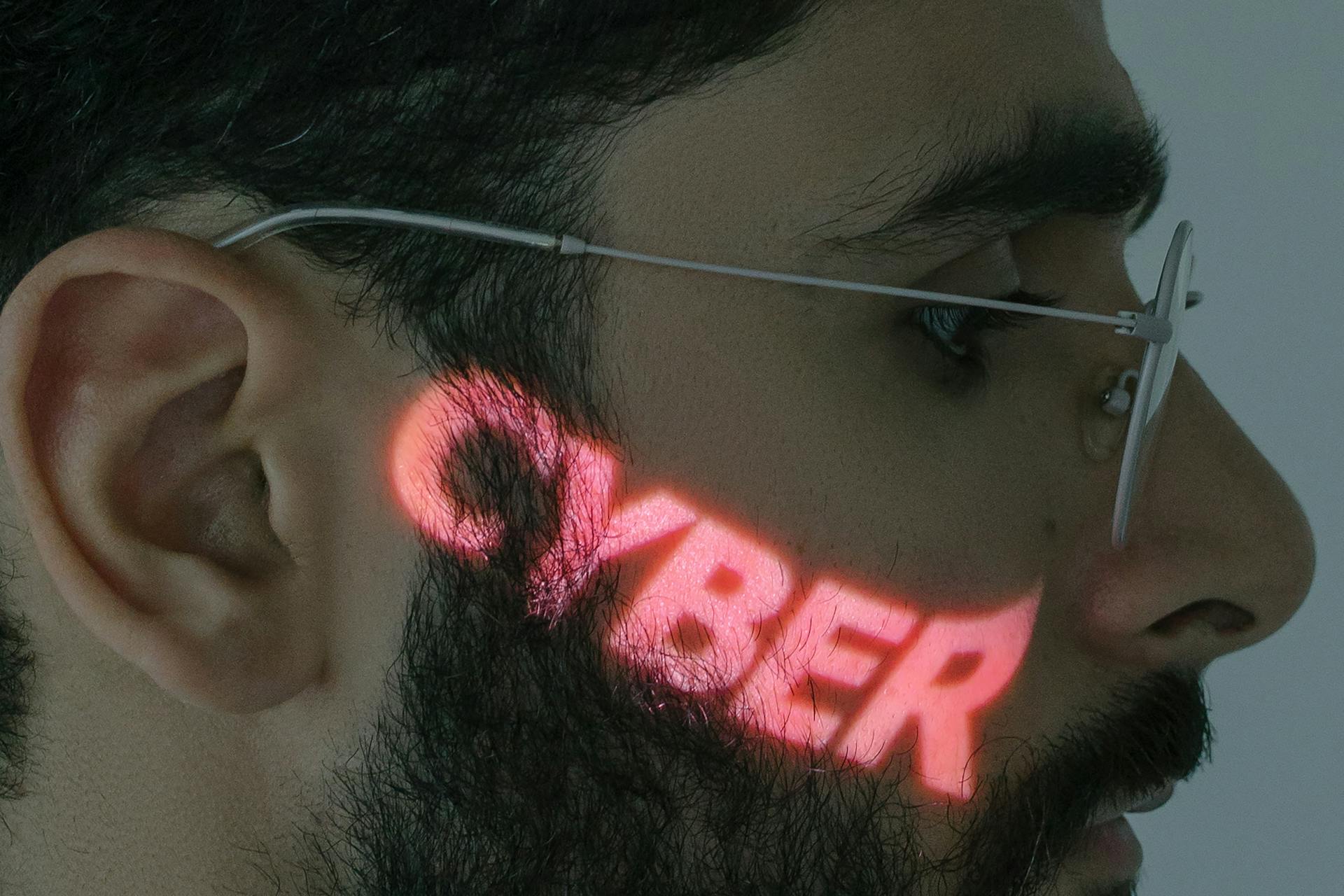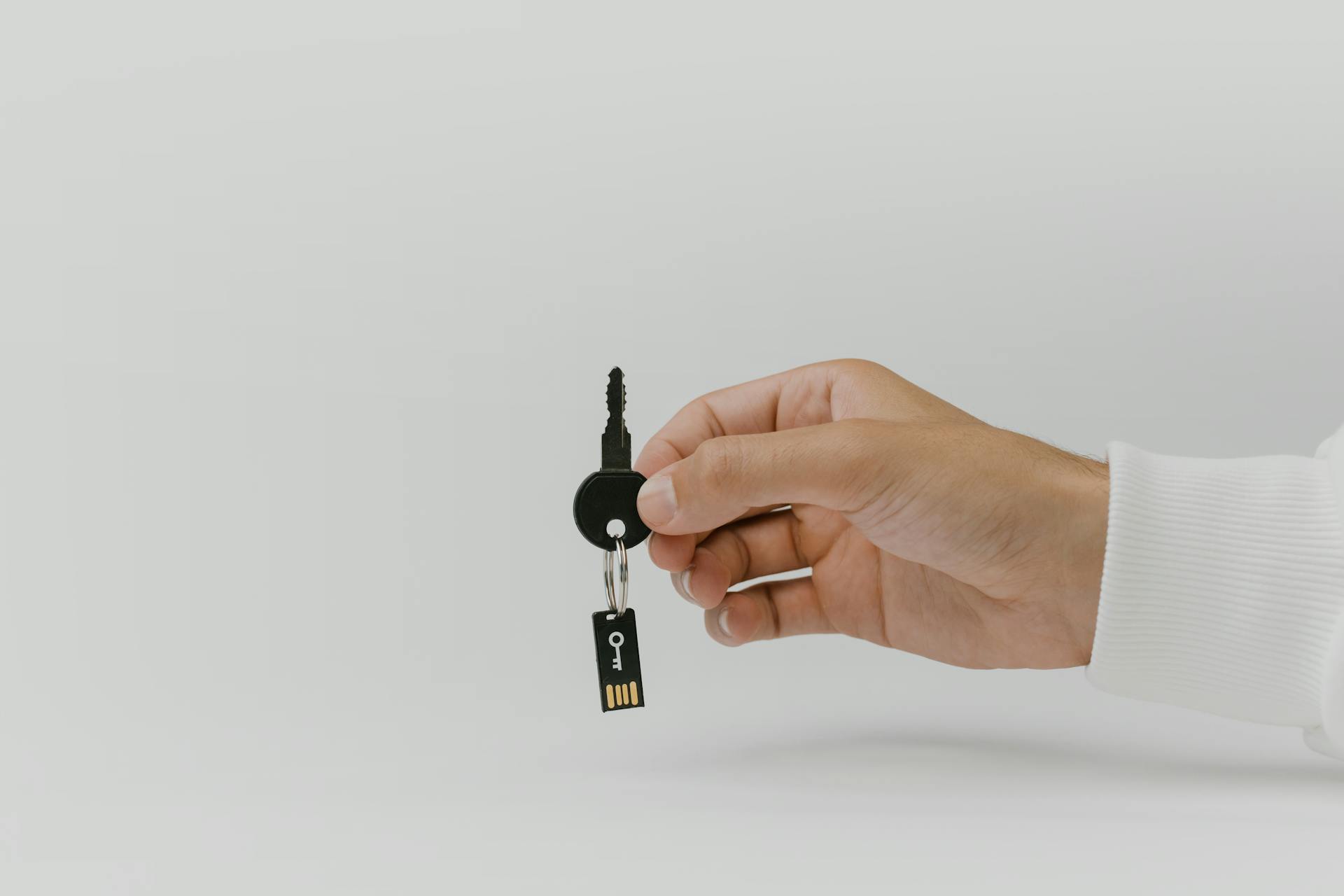
Microlending is a way for people to borrow small amounts of money to start or grow a business. This type of lending is typically done through non-traditional channels, such as online platforms or community organizations.
The average loan size for microlending is around $1,000 to $10,000, which is significantly smaller than traditional bank loans. This allows individuals to access capital that might otherwise be out of reach.
Microlending has the potential to have a significant impact on communities by providing opportunities for economic growth and development. By supporting local entrepreneurs, microlending can help create jobs and stimulate local economies.
What is Microlending
Microlending provides a way for low-income individuals to access financial services they might not otherwise have. This can include small business loans, checking and savings accounts, and even microinsurance.
Microcredit is a type of microlending that offers small loans to people below the poverty line, often without collateral or credit history. These loans can help new entrepreneurs get started.
In developing nations, most microfinancing operations occur, with countries like Bangladesh, Cambodia, and India being among the most common places you'll find them. Microfinanciers charge interest on loans and require specific repayment plans.
Microfinance is a broader term that encompasses not just microcredit, but also other financial services like business education and microinsurance. It's essentially a one-stop-shop for low-income individuals looking to improve their financial situation.
Here are some key facts about microlending:
- Microfinance represents banking services for low-income individuals or groups.
- Most microfinancing operations occur in developing nations.
- Microfinanciers charge interest on loans and institute specific repayment plans.
Benefits and Advantages
Microfinance has the power to transform lives and communities. Approximately 97 million people living on less than $2 a day can increase their household wealth by investing in raw materials, better seeds for farming, or a college degree.
By providing access to financial services, microfinance can create opportunities for others. A loan used to launch a small business can improve the economic health of a community by providing new job opportunities.
Families who utilize microfinance are less likely to pull their children from school for economic reasons and have more resources available to pay for healthcare. This promotes better health and education.
Over 80 percent of Kiva microloans go to women, funding businesses, enterprises, and education in countries where social norms do not support gender equality. This helps close the gender gap.
Through Kiva microloans, approximately $1.8 billion has been deployed to nearly 4.5 million borrowers in 94 countries so far. This demonstrates the potential for sustainable impact.
Here are some key benefits of microfinance:
- Increase household wealth
- Create opportunities for others
- Promote better health and education
- Help close the gender gap
- Provide a sustainable way to help low-income populations
The International Finance Corp. (IFC) has helped establish or improve credit reporting bureaus in 30 developing nations. This can help entrepreneurs access credit and grow their businesses.
Flexible eligibility requirements, loan options targeted to underserved communities, and competitive interest rates make microfinance an attractive option for business owners. Lenders often offer business training and educational resources to help entrepreneurs succeed.
More than 174 million people have directly or indirectly benefited from microfinance-related operations. However, an estimated 1.7 billion people lack access to establishing basic financial accounts.
How it Works
Microloans typically work like traditional term loans, where you receive a lump sum of capital from a lender and repay it, with interest, over a specific period of time.
Repayment terms, interest rates, and maximum loan amounts will vary based on your lender. For instance, SBA microloans are available in amounts up to $50,000 with repayment terms up to seven years.
Microloans can be used for various purposes related to starting or growing a business, such as covering day-to-day expenses, purchasing inventory, or making payroll.
The Goal
The goal of microfinance is to provide access to services that enable economic agency and financial freedom for all. Microfinance aims to eradicate global poverty, but it's not just about that - it's also about giving people the tools they need to take control of their finances and build a better life.
The primary ambition of microfinance is to improve financial inclusion, which means making sure everyone has access to the financial services they need to succeed. This includes things like loans, savings accounts, and other financial products that can help people manage their money and achieve their goals.
Ultimately, microfinance is about empowering individuals and communities to take charge of their economic futures, and to build a more stable and prosperous world for everyone.
Does It Work?

The impact of microfinance on borrowers can be transformative if designed around their needs and circumstances.
A study in India showed that borrowers saw a 41 percent increase in weekly profits when given a two-month grace period before repaying their loans.
High interest rates and predatory lending practices can trap vulnerable people in debt, but organizations like Kiva remain vigilant in preventing such practices.
Kiva conducts due diligence and regular audits to ensure its Field Partners adhere to responsible and fair lending practices.
Positive impact can mean more money: Rural farmers in East Africa who received microloans through the One Acre Fund increased their incomes by 40-50 percent compared to a control group.
In Madagascar, 92 percent of customers of Boabab+, a provider of off-grid solar energy systems, reported feeling safer in their homes due to increased light.
Borrowers with Field Partner BRAC in Uganda and Kenya have also shown positive results, with 92 percent earning more money after engaging with BRAC.
How Microloans Work
Microloans work in a way that's similar to traditional term loans. You receive a lump sum of capital from a lender and repay it, with interest, over a specific period of time.
Repayment terms, interest rates, and maximum loan amounts will vary based on your lender. For instance, SBA microloans funded by the U.S. Small Business Administration are available in amounts up to $50,000 with repayment terms up to seven years.
Loans from nonprofit organizations like Grameen America are available in smaller amounts, up to $2,000, with repayment terms of six months. This flexibility is one of the key benefits of microloans.
Microloans can be used for a range of purposes related to starting or growing a business, such as covering day-to-day expenses, purchasing inventory, or making payroll.
Here are some common characteristics of microloans:
Microloans are not grants; they must be repaid to the lender. Like standard term loans, microloans are typically repaid, with interest, on a set schedule over a predetermined period of time.
Types of Microlenders
There are various types of microlenders that offer loans to small businesses and entrepreneurs.
One type is the SBA microloan program, which is funded by the SBA and administered through a network of community lenders, also called intermediaries. Each lender can set its own standards, subject to SBA guidelines.
Justine Petersen is another type of microlender, a not-for-profit corporation based in St. Louis that offers several types of microloan programs for small businesses. The microloan size varies based on the program, but typically up to $50,000.
Internet-based organizations have also developed platforms that facilitate peer-to-peer lending, such as Kiva, Zidisha, and the Microloan Foundation, where a loan is made as the aggregation of a number of smaller loans.
Here are some key characteristics of microlenders:
SBA Microlenders
SBA microlenders offer a great option for small businesses that may not qualify for other types of SBA loans. They provide loans up to $50,000 with interest rates ranging from 8% to 13%.
The SBA microloan program is funded by the SBA and administered through a network of community lenders, also called intermediaries. These microlenders serve all 50 states, Washington, D.C., and Puerto Rico, with 160 SBA microloan intermediaries as of September 2023.
You can find a lender that serves your area by searching the directory on the SBA’s website. The average microloan issued in the 2023 fiscal year was $15,799, much lower than the maximum available loan amount.
Justine Petersen, a not-for-profit corporation based in St. Louis, offers several types of microloan programs for small businesses. They have a focus on expanding access to capital, making it a good option for business owners with a limited credit history or those in traditionally underserved communities.
Interest rates and repayment terms on SBA microloans vary based on the intermediary lender, but repayment terms cannot exceed seven years.
Farm Service Agency
The Farm Service Agency (FSA) is a great resource for farmers looking to access capital. As part of the U.S. Department of Agriculture, the FSA offers two types of farm loans through its microloan program.
These loans are designed to help smaller farms, including nontraditional operators like farm trucks, farms participating in direct sales, and community supported agriculture (CSA) farms, access the capital they need.
The FSA microloan program offers two types of loans: direct farm ownership microloan and direct farm operating microloan.
Here's a brief breakdown of the two types of loans:
As of September 2023, the interest rates for these loans are 5.125% for operating loans and 5% for ownership loans.
Choose a Microlender
Choosing a microlender can be a daunting task, but don't worry, I've got you covered. You can find microlenders that are local to your area by using the SBA's website to find SBA microloan intermediaries by state, as well as referring to regional business organizations for other microlending options.
The best microlender for your business will likely be the one that offers you the most competitive rates and terms. Other factors, like funding speed and educational resources, may also play a role in your decision. As you start your search, consider microlenders that offer flexible eligibility requirements and are willing to work with startups, even those with no revenue yet, and businesses with bad credit.
To qualify for a microloan, you'll typically need to have been generating consistent revenue for at least six months, have a minimum credit score of 575 or higher, and no more than $3,000 in unpaid or past due debt. Some microlenders, like Accion Opportunity Fund, may require a minimum credit score of 600 or higher, but they may also offer larger maximum loan amounts.
Here are some popular microlenders to consider:
- Accion Opportunity Fund: offers loans up to $250,000 with interest rates ranging from 8.49% to 24.99%
- Ascendus: offers loans up to $50,000 with interest rates ranging from 6% to 9.99%
- Justine Petersen: offers loans up to $50,000 with interest rates ranging from 6% to 20%
Keep in mind that the specific requirements and terms will vary depending on the microlender and your business's qualifications. Be sure to research and compare different options to find the one that best fits your needs.
Group Lending
Group lending is a type of microcredit that involves lending to groups of people rather than individuals. This approach was initially motivated by economics of scale, as the costs associated with monitoring loans and enforcing repayment are significantly lower when credit is distributed to groups rather than individuals.
In the 1970s, Jobra used solidarity circles, where a group of borrowers provide mutual encouragement, information, and assistance in times of need, though loans remain the responsibility of individuals. This practice was later adopted by Grameen Bank and other early microcredit institutions.
Muhammad Yunus, the founder of Grameen Bank, promoted private ownership and neoliberalism, believing that every person has the potential to become an entrepreneur. He saw poverty eradication as being in the hands of the individual.
The use of group-lending transfers repayment responsibility off of microcredit institutions to loan recipients, as the loan to one participant in group-lending often depends upon the successful repayment from another member. This approach has been used to reduce the costs associated with monitoring loans and enforcing repayment.
Eligibility and Application
To access a microlender's loan options, you'll first need to understand your eligibility requirements. This typically involves evaluating your business's credentials, including factors such as personal credit score, annual revenue, time in business, past or current debt obligations, and previous bankruptcies.
Some microlenders may not require a minimum credit score or annual revenue, but it's still essential to assess your business's standing. This will give you a sense of what loan options you may be able to access.
To submit your application, you'll typically need to provide basic details about you and your business, as well as upload required documentation, such as business and personal bank statements, business financial statements, and business and personal tax returns.
Eligibility Requirements
To get a business loan, you'll want to understand your eligibility requirements.
Lenders typically consider personal credit score, annual revenue, time in business, past or current debt obligations, and previous bankruptcies when evaluating your business.
A good personal credit score can make a big difference in getting approved for a loan.
Annual revenue is another important factor, as lenders want to see that your business is generating enough income to pay back the loan.

Time in business is also a consideration, as lenders want to see that your business has a track record of success.
If you have past or current debt obligations, it may affect your eligibility for a loan.
Previous bankruptcies can also impact your chances of getting approved.
Here are some of the key factors lenders consider when evaluating your business:
- Personal credit score
- Annual revenue
- Time in business
- Past or current debt obligations
- Previous bankruptcies
Submit Your Application
Submitting your application is a straightforward process. You can complete and submit your loan application online, providing basic details about you and your business, along with the required documentation.
Typically, you'll need to include business and personal bank statements, which provide a clear picture of your financial situation. This is a standard requirement for most microlenders.
You'll also need to upload business financial statements, which give a detailed view of your business's financial health. This information helps the lender assess your creditworthiness.
Business and personal tax returns are also required, which demonstrate your business's income and expenses over a specific period. This information is essential for the lender to make an informed decision.

The time it takes to receive a decision on your application will vary based on the microlender. Some lenders may be able to provide a decision quickly, while others may take longer.
The lender may also contact you during the process to discuss your options or ask for additional information. Be prepared to provide more details or clarify any questions they may have.
History and Impact
Microfinance has a long history that dates back to the 18th century with the Irish Loan Fund system introduced by Jonathan Swift. This was a precursor to modern microfinancing.
The first modern microcredit institution, the Grameen Bank, was founded in 1983 by Muhammad Yunus in Bangladesh. Yunus began the project in a small town called Jobra, using his own money to deliver small loans at low-interest rates to the rural poor.
The Grameen Bank was followed by organizations such as BRAC in 1972 and ASA in 1978, and microcredit quickly became a popular tool for economic development. Hundreds of institutions emerged throughout the third world.
Microcredit was initially used to provide loans to women in rural areas, such as the 42 women in the Bangladeshi village of Jobra who made bamboo stools but did not have the money to purchase the raw materials. By lending them $27, Yunus was able to help them climb out of their debt cycle.
The impact of microcredit has been significant, with proponents stating that it reduces poverty through higher employment and higher incomes. Critics, however, argue that microcredit may drive poor households into a debt trap if not carefully directed.
Here are some key statistics on the impact of microcredit:
- According to the Global Microfinance Industry Report, the market is expected to reach a value of $394.8 billion by 2027.
- Microcredit has facilitated the creation and growth of businesses, generating self-employment and creating jobs.
- However, studies suggest that microcredit has not generally increased incomes after interest payments, and may have driven borrowers into debt traps.
The History of Microlending
The concept of microlending has been around for centuries, with small operations existing since the 18th century. The Irish Loan Fund system, introduced by Jonathan Swift, is one of the earliest recorded examples of microlending.
John Wesley began a microcredit scheme in 1746, which provided loans to the poor, with a repayment period of three months. He collected thirty pounds sixteen shillings and helped over two hundred and fifty-five people in eighteen months.
In the 19th century, Lysander Spooner and Friedrich Wilhelm Raiffeisen independently developed ideas for cooperative lending banks to support farmers in rural Germany. These early pioneers laid the groundwork for modern microfinance.
Dr. Muhammad Yunus, a Bangladeshi innovator, is often credited with popularizing microfinance in the 1970s. He made small personal loans to women in a rural village, allowing them to purchase raw materials and sell their wares at a fair price.
The Grameen Bank, founded by Yunus in 1983, is considered one of the first modern microcredit institutions. It used a group lending model, where borrowers formed groups and collectively guaranteed each other's loans.
Impact of Microcredit
The impact of microcredit is a complex and multifaceted issue. Microcredit has facilitated the creation and growth of businesses, often generating self-employment. However, it has not necessarily increased incomes after interest payments.
Some studies suggest that microcredit has not generally empowered women, which is a key argument made by its proponents. The available evidence indicates that in many cases microcredit has driven borrowers into debt traps.
Microcredit has achieved much less than what its proponents said it would achieve, but its negative impacts have not been as drastic as some critics have argued. The success of small businesses is influenced to a much larger extent by how much an economy or a particular market grows.
Unintended consequences of microfinance include informal intermediation, where entrepreneurial borrowers become intermediaries between microfinance initiatives and poorer micro-entrepreneurs. This can range from casual intermediaries to loan sharks.
The For-Profit Controversy
Microfinance has been a topic of debate, with some critics arguing that it preys on people with low incomes. Microfinance interest rates are generally higher than those of conventional banks. This has led to the transformation of some non-profit microlenders into for-profit companies, such as Mexico's Banco Compartamos, which went public on the Mexican Stock Exchange in 2007 and raised over $400 million.
Banco Compartamos makes small loans, primarily to women, and pools borrowers into groups. However, unlike non-profit institutions, it distributes its profits to shareholders. This approach has raised concerns about the ethics of microfinance. Some critics argue that microfinance keeps recipients working in subsistence-level trades, barely covering basic needs.
The divide between non-profit and for-profit microfinance enterprises is a significant issue. Non-profit institutions use their profits to expand their services or create more programs, whereas for-profit companies prioritize shareholder interests. This has led to a debate about the true purpose of microfinance.
Here are some key differences between non-profit and for-profit microfinance institutions:
- Non-profit institutions use profits to expand services or create more programs.
- For-profit companies prioritize shareholder interests.
The controversy surrounding for-profit microfinance is a complex issue. While some argue that it provides a necessary service, others see it as a way to exploit the poor. The example of Banco Compartamos highlights the tension between profit and social responsibility in microfinance.
Featured Images: pexels.com


